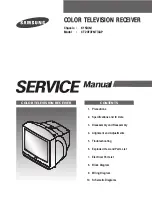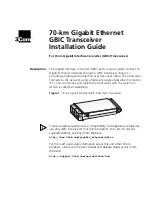
www.javad.com
13
• Appending data to a specific file - If the new re
-
ceiver data are to be appended to an existing log
file, enter the desired filename in the Always append
to the file edit box. The setting can be up to twenty
characters long.
•
Toggle Automatic Rotation Mode - enables/dis-
ables Automatic File Rotation Mode.
Automatic File Rotation Mode (AFRM)
Figure 16. AFRM
• Period – specifies the time duration of each of the
multiple log files created in AFRM mode.
• Phase – specifies the phase (i.e., constant time shift)
of the multiple log files created in AFRM mode.
• Enable Oldest Log-file removal – if active, the re
-
ceiver will remove the least recent files if no free
space is available in the receiver memory to record
the current file
Setup and survey
After configuring the receivers for surveying, each
receiver needs to be setup up and the receiver’s height
measured and the survey can begin. The MinPad pro-
vides quick access for logging data, changing receiver
modes, and viewing general data logging and satellite
information during a survey.
A typical GPS survey system consists of a Base sta-
tion set up over a known point and a Rover receiver set
up to be a mobile data collector. After setting up the
Base and Rover receivers, the antenna height must be
measured.
Before collecting data, make sure the Base and Rover
receivers contain a current almanac and current ephem-
eris data.
The Base station must be set up, logging data, and
transmitting data before setting up the Rover receiver.
Receiver setup for either post-process or RTK surveys
is the same.
Measure Antenna Height
The location of the antenna relative to the point being
measured is very important for both surveys in which
the elevation of the points is important and in surveys
for horizontal location only. Horizontal surveys are of-
ten larger in area than can reliably fit on a flat plane,
therefore the antenna adjustment must be done in three
dimensions and then projected onto a two dimensional
plane.
The receiver calculates the coordinates of the anten-
na’s phase center. To determine the coordinates of the
station marker, the user must specify the following:
•
Measured height of the antenna above the station
marker
•
Method of measuring the antenna height
•
Model of the antenna used
Antennas have two types of measurements:
•
Vertical – measured from the marker to the anten-
na reference point (ARP) located on the bottom of
the receiver at the base of the mounting threads.
•
Slant – measured from the marker to the lower edge
of the antenna slant height measure mark (SHMM)
located on both end panels of the receiver.
The point to which surveying with GNSS measures
is called the Phase Center of the antenna. This is anal-
ogous to the point at which a distance meter measures
in a prism. A user must enter the prism offset to com-
pensate for this point not being at a physical surface of
the prism. For a GNSS antenna, the offset is entered
depending on the type of measurement taken.
For vertical, the offset is simply added to the mea-
sured vertical height to produce a “true” vertical height.
For slant height, the vertical height must first be cal
-
culated using the radius of the antenna, then the offset
can be added.
The offsets are different because of the difference in
location between the slant measuring point and the ver-
tical measuring point.
Measure the antenna height above the control point
or marker, either the slant height or the vertical height.
Record the antenna height, point name, and start time
in the field notes
To start survey DELTA-3 should be set up on a tripod
or in a pole.
Summary of Contents for DELTA-3
Page 21: ...www javad com 21 ...








































